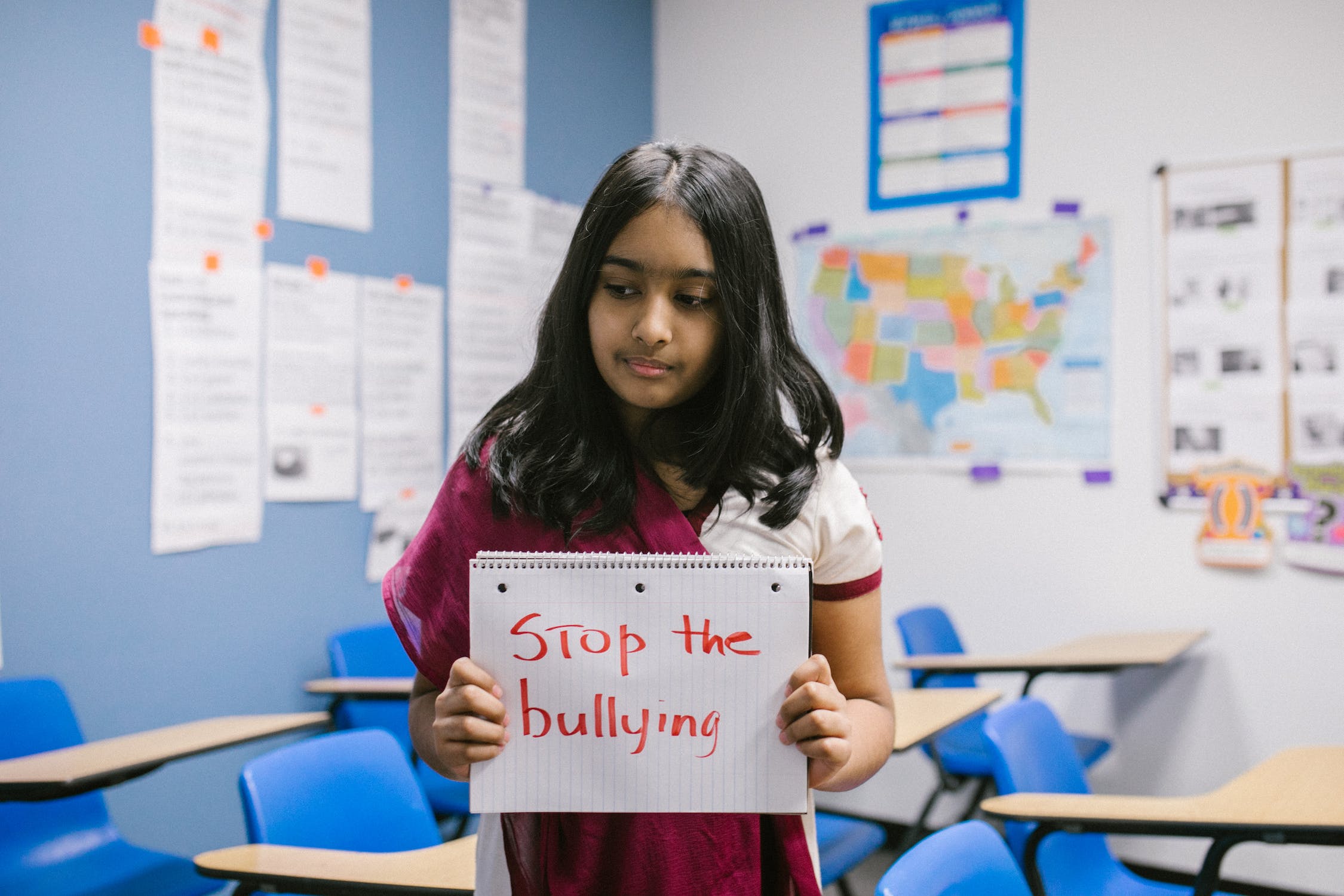Bully Proof Your Child in 5 Steps
By TMoM Team Member Britney Dent
Most children experience bullying over their 12+ years of education. Fortunately, few children deal with excessive bullying over a long period of time. Plus, schools are much better at taking these matters seriously today. While some children take a little bullying in stride, others find the experience very stressful. The stress of bullying is often exacerbated when children have access to technology. Cyberbullying occurs when someone uses digital technology to bully (harm, intimidate, or coerce).
The Truth About Bullying
It’s estimated that 160,000 students miss school each day because they’re afraid of someone at school. The Pew Research Center observed that at least half of the young U.S. population faced bullying online in 2022. It’s heartbreaking to imagine your child as a member of either statistic.
Bullies build their self-esteem by making others miserable. They feel powerful when they can upset someone. While a bully is deserving of pity, it’s hard to be sympathetic when your child is being bullied.
Children will often hide the fact that they’re a victim of bullying. They may try to avoid school by pretending to be sick, have trouble sleeping, or be moody in general. When a child that normally likes school suddenly shows signs of disliking it, they might be the victim of a bully. Children hide cyberbullying by deleting text messages, using social sites that automatically delete content after 24 hours, or by using separate or private email addresses to communicate with peers, even with their bully.

Five Steps to Help Bully Proof Your Child
There are many things you can do to reduce the odds of your child falling victim to a bully at school or online or elsewhere.
1. Develop your child’s self-esteem.
We’re all more capable when we feel good about ourselves. Your child is no different. A child with healthy self-esteem is in a better position to handle bullying and seek help when necessary.
Bullies are also more likely to pick on those with low self-esteem. Unfortunately, these children make the easiest targets and put up the least resistance.

2. Teach your child to be a problem-solver.
No matter what challenge your child faces, teach them to approach the issue from the perspective of a problem-solver. A child that develops the habit of resolving challenges will be more capable of dealing with a bully successfully. They are also more apt to discover solutions to preventing, avoiding, or recovering from cyberbullying.
Allow your child to help you find solutions to challenges at home. Imagine you can’t find your keys. You could walk your young child through the process of locating them. There are many ways to practice problem-solving.
3. Avoid allowing your child to be a victim.
Some children learn to cope with stress and anxiety by acting helpless. They’ve learned that an adult will come and solve their problems for them. Teach your child to deal with their challenges assertively. Rather than allowing themselves to be bullied, a non-victim will seek the help they require.
Avoid swooping in to save your child every time they experience stress or a disagreement at home. Teach them how to handle psychological pressure in a healthy and assertive manner.

4. Encourage your child to make friends at school.
Those that are socially isolated make the easiest targets for bullies. Get to know other mothers of students in your child’s class. Encourage your child to bring a friend home after school. A child with good social support is bully proof.
Beware of online friends that you haven’t met and that your child may not have even met. Talk to your child about making friends and what a good friend is like. Over half of bullying situations end when a peer gets involved in the situation. Be sure your child has some ‘upstanders’ in her corner and not just bullies and “bystanders”. Friends are the key to avoiding bullies.
5. Get the school involved.
If your child is being bullied, involve the school. Avoid dealing directly with the other parents outside of a mediated environment. School officials take bullying very seriously. No child wants to have his parents dragged into school. Offering a little resistance can be a good way to get other children to leave yours alone. Even cyber bullying can be addressed on the school level as it impacts the learning environment and typically comes from classmates even during school breaks and weekends.
No child can truly be bully proof. But you can come close. A confident, assertive child with a close group of friends isn’t an attractive target for a bully. Help your child to become confident and value themselves. No child should have to deal with a bully whether at school or online.

Want to see more blogs like this and also get notifications on local events and happenings? Subscribe to our free weekly newsletters here.

